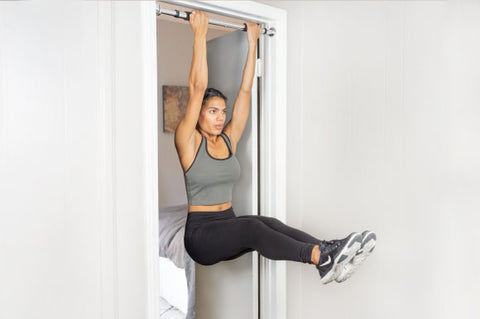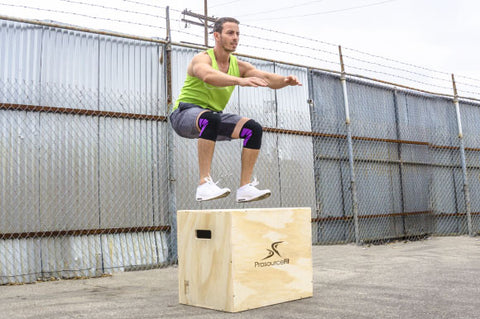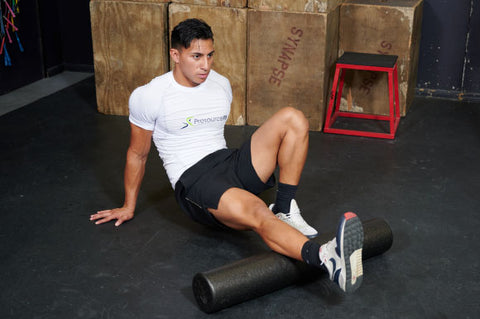Over 300,000 people competed in the CrossFit Open in 2023, and even more are expected to participate in 2024. As the biggest sporting event on Earth in terms of participation, the CrossFit Games truly crowns the widely-proclaimed "Fittest on Earth." Athletes submit their scores online or at one of many CrossFit training gyms around the world, and the leaderboard gets updated to show performance against a world of competitors.
The CrossFit Open is a culmination of a year's worth of training. Do you want to be the next great challenger? Or do you simply want to witness the fruits of your labor?
We'll help you understand these games, and give you the tools you need to conquer them.
Understanding the CrossFit Open
The CrossFit Open follows a three-week structure, with the workouts being revealed every seven days once the event is underway. This format encourages a well-rounded training approach because unpredictable workouts can play the foil to static routines.
In 2024, the events are named Workout 24.1, Workout 24.2, and Workout 24.3 — taking place from late February through mid-March.
Those between the ages of 18-34 are placed in the individual division, measured against all in that age range of the same gender. There are several other age divisions for younger competitors (14-17) and those above 35 years of age. The top 25% of competitors move on from the Open round to the Quarterfinal round.
Designing a Training Plan
Consider yourself a professional athlete, because you’re going to be preparing like one. The goal of your training should be to peak your performance when the CrossFit competition season begins. To do this effectively, we’ll divide your year into three distinct periods, each with a specific focus, intensity, and goal.
The three periods are as follows:
- General Preparation Period
- Specific Preparation Period
- Competition Preparation Period
General Preparation Period

The General Preparation Period is the first phase of training for ANY competitor. We recommend finding a coach or CrossFit training gym to properly assess your baseline, as identifying your strengths and weaknesses can save you a lot of stress down the road.
This period should be focused on building every aspect of fitness; strength, muscular endurance, mobility, and aerobic capacity. Focus less on skill-based work and instead on raising your threshold.
CrossFit Open workouts are in most cases a sprint against the clock. Previous events have included 10-20 minute circuits where you aim to complete the workout as fast as possible or do as many reps as you can within the timeframe. Your threshold should be high enough to deliver a continuous output of burpees, snatches, squats, and more for as long as you can possibly muster.
Full body conditioning with a kettlebell, steel macebell, or multi-grip pull-up bar can do wonders.
Specific Preparation Period

Now you’re ready to hone your focus and start preparing for the real event. The Specific Preparation Period lasts 2 to 3 months depending on your fitness level and where you need to improve. During this phase, the focus shifts from general conditioning to more specific skill and strength development on the workouts you’re likely to face.
This is where it’s EXTRA important to work closely with a coach or CrossFit training gym. Making leaps in strength and conditioning will give you a solid foundation, but improving your technique is the difference between ranking in the middle of the pack versus the top of it.
It’s not uncommon to be naturally proficient in certain exercises and lacking in others. The goal of this period is to target your weaknesses and fine-tune performance to be as competitive as possible during the CrossFit Open. Additionally, lifestyle changes like better nutrition and recovery can make a day and night difference.
Event-specific products like the Plyometric Jump Box can help you practice reps for uncommon workouts.
Competition Preparation Period

The CrossFit Competition Preparation Period is the final phase in a competitor’s journey leading up to the CrossFit Open. This period, usually lasting around 1-2 weeks, is all about fine-tuning and mentally preparing for the event. Workouts become less intense and focus shifts to mobility, recovery, and ensuring the body is primed for peak performance. The last thing you want to do is tweak something and be forced out of the event.
Your body should be primed by this time, so the battle becomes less about the physical challenge and more mental. It’s a common practice used by elite athletes to visualize success. Visualize yourself doing every rep exactly as practiced, remember the numbers you hit during training sessions and visualize yourself getting that new PR.
Lastly, it’s also a time to strategize and plan for each workout, considering factors such as pacing, transitions, and when to push for extra effort. Nutrition and sleep are particularly important during this phase to ensure the body is fully fueled and rested for the demands of the competition.
Check out our line of recovery products to get you ready for the competition!
Specific Training Considerations
Below, we’ll list a handy guide of last second tips to have you performing at optimal capacity:
- Pace: Don’t compete how you didn’t practice. Trying to push the pace to get a high score on CrossFit workouts can backfire in an instant if you’ve never tried it before. You’ll catch yourself burning out, and the whole back end of the workout will be a slog.
- Conserve: The CrossFit open workout will more than likely include multiple exercises. If you know that you’re proficient in one exercise and not so great at another, utilize your technique advantage to make up time on what you’re good at, and take it slower where you’re not as good.
- Breathe: Don’t rush and don’t worry. The event is the fun part, and you should treat it as such. Controlling your breathing can keep you from tensing up which will conserve energy, provide oxygen, and give you the best chance at success.
Best of luck to all the CrossFit athletes competing in this year's games!
Disclaimer: We are not affiliated with CrossFit, Inc. Any information represented in this article is strictly for educational purposes.


